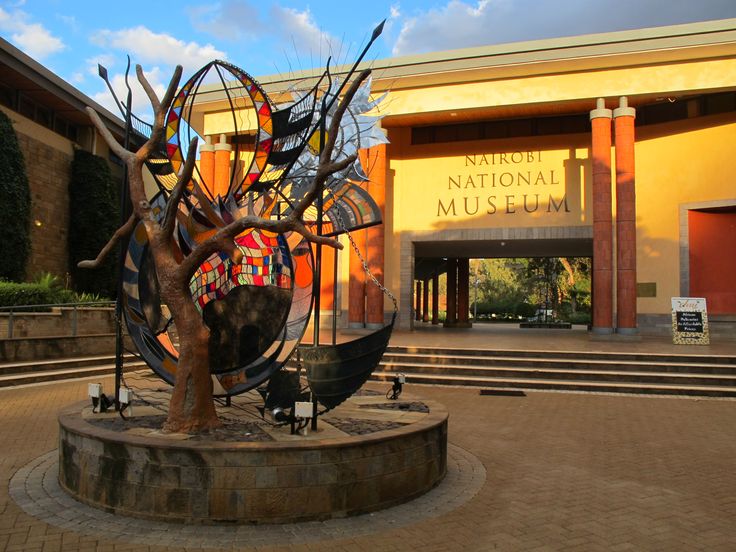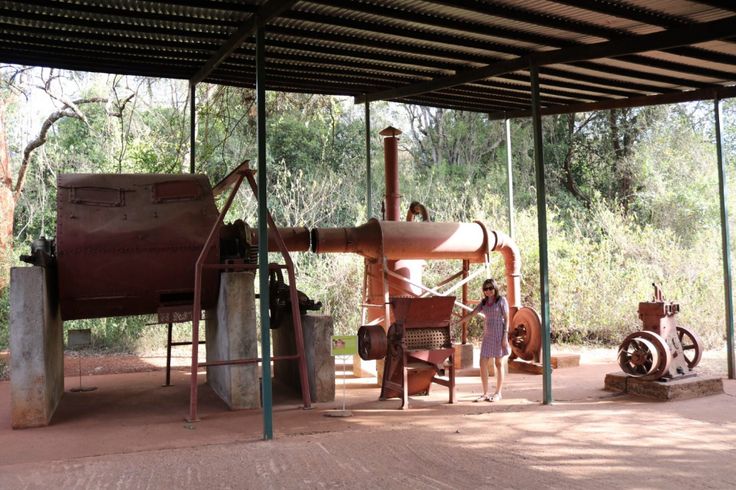Did you know Nairobi has over 30 protected historic sites? Yet, most visitors only see the famous wildlife parks. Nairobi’s historic landmarks take you on a journey through Kenya’s past. It’s not only enriching, but affordable.
As someone who explored these sites, I found some hidden gems for you! Here, history and affordability meet.

Key Takeaways
- Over 30 historic sites in Nairobi await discovery beyond typical tourist trails.
- Iconic landmarks like the Karen Blixen Museum and Nairobi Railway Museum blend cultural depth with low-cost entry.
- Many sites offer free guided tours or discounted group rates for budget-conscious travellers.
- Walking routes and local transport options make exploring history accessible without high costs.
- Each landmark reflects Kenya’s colonial, political, and literary heritage in unique ways.
Why Nairobi Should Be on Every Backpacker’s Bucket List
Nairobi is a mix of history and adventure, perfect for budget-conscious explorers. I’ve walked its streets and seen how it tells East Africa’s story. From old buildings to monuments, Nairobi’s must-see places are history lessons.
The Historical Significance of Kenya’s Capital
Nairobi started as a British railway hub in the 1890s. The Nairobi travel guide points out places like the Nairobi Railway Museum. Here, steam engines tell stories of colonial times.

Uhuru Park is where Kenya gained independence in 1963. These sites are more than just old buildings. They help us understand Kenya’s past.
My Personal Journey Through Nairobi’s Rich Past
“Nairobi is a city where the East African imagination lives and thrives, restless and ambitious.”, Binyavanga Wainaina
At the Karen Blixen Museum, I felt the mix of European settlers and native cultures. The Freedom Park Memorial showed Kenya’s fight for freedom. These moments made history real.
How to Approach Nairobi as a History-Loving Traveller
Begin with free guided walks at Nairobi National Museum. Talk to local guides for the best stories. My favourite insights came from a retired teacher in the Old Town.
Respect cultural spaces. Always ask before taking photos at places like Jamia Mosque.
| TIP | EXAMPLE |
|---|---|
| Combine sites | Pair Parliament Buildings with nearby Freedom Square |
| Use public transport | Matatus to Kibera highlight urban history |
| Seasonal timing | Independence Day events in December offer free reenactments |
Nairobi’s Historic Landmarks Every Backpacker Should Visit
When I planned my list of Nairobi tourist attractions, I looked for places that are both historic and easy on the wallet. Each spot has its own story, from old buildings to the fight for Kenya’s freedom. These places are more than just sights; they’re a peek into Nairobi’s heart.
The Nairobi National Museum is a must-see, with its displays on Kenya’s past and present. The Karen Blixen Museum is a peaceful place that brings “Out of Africa” to life. And, the Railway Museum shows off old trains, telling tales of Kenya’s colonial days. You can get to all these places by affordable matatus or on foot.
- Must-visit criteria: Historical impact, entry fees under £5, and public transport links.
- Hidden gems like the Freedom Corner monument add depth to your journey.
- Guided tours often cost less than £10 and provide rich context.
“The best stories in Nairobi are written in its buildings and streets,” said a local historian during my research. “They’re waiting to be discovered.”
This guide covers the basics, but there’s more to explore in Nairobi. Places like the Holy Family Cathedral or the University of Nairobi’s old buildings are worth a visit. Make sure to check their opening hours online to avoid missing out.
With this guide, you can explore centuries of history in Nairobi without breaking the bank. The next parts will take a closer look at each site, starting with the National Museum’s fascinating stories.
The Iconic Nairobi National Museum: A Window into Kenya’s Past
The Nairobi National Museum is a key spot for those interested in Nairobi historical sites. It’s a great choice for backpackers looking to explore without spending a lot. The museum showcases Kenya’s history, culture, and colonial past, making it a top pick for curious visitors.
Must-See Exhibits for History Enthusiasts
Start at the Human Evolution Gallery to see Kenya’s ancient history. The Independence Hall has artefacts from Kenya’s fight for freedom. The Cultural Galleries show off Maasai beadwork and Swahili coastal art, highlighting Kenya’s diverse culture.
Budget-Friendly Visiting Tips
- Entrance fee: £3 for adults, £1 for students with ID
- Free guided tours every Saturday morning
- Open daily except Mondays, best visited midweek to avoid crowds
My Favourite Hidden Gems Within the Museum
I love the Memorial Garden with its old prison cell doors from the 1950s. The temporary exhibits change often, like the photo series on Kenyan fashion I saw. The gift shop has arrowhead replicas for under £5, a great souvenir.
Karen Blixen Museum: Walking in the Footsteps of “Out of Africa”

The Karen Blixen Museum is in Nairobi’s Karen suburb. It links us to Kenya’s colonial past. Danish author Karen Blixen lived here, and her memoir Out of Africa tells her story. Walking through, you feel connected to her world.
The lush gardens are like the landscapes she wrote about. It’s a key spot among Nairobi’s historic landmarks.
“Here I am, where I ought to be.”
This quote by Blixen welcomes visitors and captures the museum’s calm vibe. Guides share stories of her life, her farm, and colonial times.
They talk about the challenges and the complex relationships between settlers and locals. This gives a balanced view of Kenya’s history.
Practical tips for backpackers:
- Entrance fee: KSh 1,000 for non-residents (around £7)
- Guided tours available daily at 10 AM and 2 PM
- Combine with a visit to the nearby Ngong Hills for panoramic views mentioned in her book
Pro tip: Get there early to enjoy the grounds before it gets busy. The gift shop has her books and local crafts. These make great souvenirs. Matatus from City Hall to Karen are cheap and quick.
Visiting the Karen Blixen Museum offers a deep dive into Nairobi sights. It shows how literature and history can meet. It’s a place to think deeply about Kenya’s past.
Nairobi Railway Museum: The Story of Kenya’s Colonial Railway
Step into Nairobi’s Railway Museum, a hidden gem among Nairobi tourist attractions. It tells the story of the Uganda Railway’s iron legacy. This small but powerful site shows how railways changed East Africa’s future.

Locomotives That Shaped History
Don’t miss the vintage locomotives like the “Lunatic Express” steam engine. These old giants share stories of 19th-century dreams. The museum also shows carriages used by early colonial leaders and Indian workers, connecting us to the past. My favourite is the 1902 locomotive with its detailed brass parts.
Colonial Tracks, Human Stories
The Uganda Railway’s building cost thousands of lives. Workers died from disease and “man-eating lions” near Tsavo. Exhibits show how the railway boosted Kenya’s coffee and tea industries and changed local economies. Guides tell stories of the 32,000 Indian workers who worked under tough conditions.
Shooting Tips for History Buffs
- Use natural light in the outdoor exhibits—early mornings avoid harsh shadows
- Capture locomotive details through glass museum windows for dramatic reflections
- Frame engine wheels against Nairobi’s modern skyline for contrast
Remember: some exhibits don’t allow flash photography. My favourite spot is the vintage ticket office replica for atmospheric shots.
The Kenyan Parliament Buildings: Political History in Architectural Form
For anyone exploring Nairobi landmarks, the Kenyan Parliament Buildings are a must-see. These neoclassical structures show Kenya’s political journey. They mix British colonial style with modern symbols, telling the story of the nation’s governance.
Every part of the building, from the grand colonnades to the independence-era murals, has a story. It’s about Kenya’s strength and unity. Walking through the colonnaded entrance, I marvelled at the building’s symmetry. It reflects colonial-era planning. The central dome shows Kenya’s fight for self-determination.
A travel guide might miss the carvings of Kenya’s first parliamentarians. These details show the move from colonial rule to self-governance. A guide said, “Every pillar here stands for a constituency, showing equality—a strong sign of democracy’s start.” Guided tours need booking online, and ID checks are strict. Tours last 45 minutes, covering the debating chamber and statues of key leaders. I suggest getting there early to see the building’s reflection in the gardens at sunrise.
Pro tip: Don’t miss the ‘Freedom Corner’ mosaic near the entrance. It’s a moving tribute to activists.
Uhuru Gardens: A short walk for picnics and views of the central business district.
Freedom Park Memorial: Commemorates key figures of the Mau Mau uprising.
State House Gate: Historic site where colonial governors once entered the complex.
Visiting these sites with Parliament tours deepens your journey of discovery and gives you a rich view of Nairobi’s political life.
Jamia Mosque: Nairobi’s Spiritual and Architectural Marvel
In Nairobi’s busy streets, Jamia Mosque is a peaceful treasure. Built in 1910, it combines Mughal and Moorish styles. Its tall minarets and detailed patterns stand out against the city’s modern look.
When I visited, I was struck by the mosque’s design. Its courtyard and prayer hall show Islamic design’s long history. Visitors must dress modestly, and non-Muslims can enter at certain times. Photography is allowed outside, showing off the mosque’s red walls and colourful stained-glass windows.
- Wear modest clothing (long skirts/pants, scarves for women)
- Check prayer schedules to avoid disruptions
- Explore the adjacent Islamic Centre for cultural insights
This mosque shows Nairobi’s diverse culture, highlighting Islam’s place in Kenya’s past. It’s a key site for those interested in Nairobi sights that reveal the city’s rich history. Jamia Mosque is unforgettable, offering a moment of calm in the city’s hustle.
Navigating Between Landmarks: Transport Tips for Budget Travellers
Exploring Nairobi doesn’t mean overspending. The transport scene is both chaotic and charming. With these tips, you’ll move between backpacker destinations in Nairobi like a pro. Kenya has one of the most unique local-commuting-bus culture.

Using Matatus Like a Local
Matatus (colourful minibuses) are Nairobi’s lifeline. Look for destinations painted on their fronts.
My top tips:
- Ask drivers or hawkers for routes (e.g., “Uhuru Park to Karen Blixen Museum”)
- Purpose to use Kenyan currency in small denominations (most don’t give change for £10 notes)
- Always sit near the driver for safety and route confirmations
Fares start at £0.50 and most routes cost under £2. Avoid late-night rides in unfamiliar areas.
Walking Routes That Showcase Hidden Gems
Walking unveils Nairobi’s hidden history. Try these paths:
| Route | Start/End | Time | Highlights |
|---|---|---|---|
| Colonial Walk | Uhuru Park → Parliament | 45 mins | Old court buildings, memorials |
| Museum Loop | Nairobi National Museum → Karen Blixen | 1 hour | Colonial-era post offices, murals |
Walk between 8 AM–6 PM. Stick to well-lit paths after dark.
Affordable Taxi and Ride-Share Options
For splurges, Uber costs £8 – £15 for landmark-to-landmark trips.
Traditional taxis: negotiate fares upfront (£10 – £15). Avoid unmarked cars. For short hops, bike rentals from CityBike have a £5/day offer.
“Matatus are fun but unpredictable. For stress-free trips, combine walks with Uber for longer distances.”
Plan your routes using the Nairobi travel guide map. Mix these options to stay under budget while discovering Nairobi’s stories between the big sites.
Affordable Hostels and Cozy Lodges for Every Backpacker
While exploring Nairobi’s iconic historic landmarks, finding a comfortable and budget-friendly place to stay is essential. The city offers a range of hostels and lodges that cater to backpackers, combining affordability with comfort. Located at the most convenient part of the the City, Ruaraka, rests Dorchester Inn Guest House.
From lively hostels in the heart of the city to serene lodges on the outskirts, you’ll find options that fit every traveller’s vibe and budget. Whether you’re seeking social spaces to meet fellow adventurers or quiet corners to unwind after a day of exploring, Nairobi’s accommodation scene has you covered
Best Times to Visit Nairobi’s Historic Sites
Choosing the right time to visit Nairobi’s historic landmarks can make a big difference. The dry season, from June to October, is perfect for outdoor spots like the Karen Blixen Museum garden. On the other hand, rainy seasons in April through May and November mean fewer people but some trails might be closed. Here’s how to plan your visit:
- January–March: The weather is mild, making it great for exploring all day. Visit the Nairobi historical sites early to avoid the heat.
- November–December: Bring waterproof gear for the Railway Museum. You’ll find fewer people around.
| Landmark | Best Time |
|---|---|
| Nairobi National Museum | Weekdays 9 – 11 AM (fewer tourists) |
| Jamia Mosque | Non-fasting days for guided tours |
For daily timing:
- Weekdays: Free entry days at the Parliament Buildings on Wednesdays.
- Mornings: The best time for photos at the Karen Blixen compound.
| Time | Activity |
|---|---|
| 8:00 AM | Start at the Railway Museum |
| 11:30 AM | Explore the National Museum |
| 3:00 PM | Visit Jamia Mosque before prayers |
Stay away from weekends at busy places like the Parliament Buildings. Always check these historical sites prior to your visit, for any events or closures. Early mornings are the best for photos and fewer people around!
Preserving Memories: Photography Tips at Nairobi’s Historic Landmarks
When you explore these landmarks, mix creativity with respect. Always think about local customs first. Before taking photos of people or places like the Jamia Mosque, ask for permission.
I’ve learned that saying “Can I take your photo?” can lead to real moments. It shows respect and opens doors.
Respectful Photography Practices
- Always seek consent in cultural or religious sites
- Avoid flash near delicate artifacts like those at the Karen Blixen Museum
- Engage with guides for insider perspectives on photo-worthy spots
Best Angles and Lighting for Each Landmark
| Landmark | Prime Time | Pro Tip |
|---|---|---|
| Nairobi National Museum | Golden hour for facade shots | Capture the Maasai Market display at 10am for vibrant contrasts |
| Karen Blixen Museum | Early mornings for quiet shots | Shoot through windows to frame colonial-era decor |
| Railway Museum | Midday for dramatic locomotive shadows | Use wide-angle lens for engine details |
Equipment Recommendations for Backpackers
Go for lightweight gear. I use a mirrorless camera with a 24 – 70mm lens. Carry a compact tripod and polarizing filter.
Smartphone users, get a GorillaPod for flexible shots.
“A good photo should tell the place’s story without disturbing its soul.”
Keep backups on encrypted USB drives. Use a slash-proof bag in crowded areas like the city centre. Let your photos be respectful keepsakes of Nairobi’s heritage.
Conclusion: Embracing Nairobi’s Rich Historical Tapestry on a Backpacker’s Budget
Exploring Nairobi’s historic landmarks is more than just seeing sights. It’s a deep dive into centuries of history and change. From the Nairobi National Museum to the Karen Blixen Museum, each place tells a part of Kenya’s story. My travels showed how these spots reveal history that’s often missed.
Backpackers can see these landmarks without spending a lot. Buying tickets for places like the Railway Museum and National Museum can save money. Free days at some spots also help keep costs down. Spending a bit on guided tours, like at Jamia Mosque, adds value without costing too much.
Walking or using matatus to get around is cheap. This lets you focus on learning about Nairobi’s history. These landmarks are not just pretty views; they’re places of learning.
Visiting these sites can be a meaningful experience. Talking to local guides or taking photos of the Parliament can make your visit special. Just remember to respect the history of each place. Nairobi’s history is full of inspiration. Explore it carefully, and let these places change how you see the world.
FAQ
What are the must-see places in Nairobi for first-time visitors?
For first-timers, start with the Nairobi National Museum, Karen Blixen Museum, and Nairobi Railway Museum. They offer great insights into Kenya’s history and culture. They’re key stops on your trip.
How can I explore Nairobi’s historic landmarks on a budget?
Seeing Nairobi’s landmarks on a budget is easy! Use local matatus for cheap travel and to experience local culture. Many museums have lower entry fees on certain days. You can also find free walking tours of historical sites.
Are there any specific historical sites I should avoid?
Most of Nairobi’s sites are safe, but be careful in less visited areas. Check recent reviews and travel advisories. Always be aware of your surroundings, especially at night. If something feels wrong, trust your gut.
How do I get around Nairobi to visit the different landmarks?
Nairobi’s matatu system connects many historical sites. Walking between landmarks in certain areas can also be rewarding. It lets you find hidden gems and local spots.
When is the best time to visit Nairobi’s historical landmarks?
Visit during the dry seasons, from January to March and June to October. This avoids rain and crowds. Early morning visits are best for cooler temperatures and fewer people.
Can I take photographs at historical sites in Nairobi?
Yes, but be respectful and check photography rules. Some sites have restrictions. Always ask before taking photos, especially at places like the Jamia Mosque.
Is it safe to walk around Nairobi when visiting historical sites?
Walking in Nairobi is safe in tourist areas. Plan your walks during the day and stay in groups. Keep an eye on your belongings and stay alert.
What should I wear while visiting the historical sites in Nairobi?
Dress modestly, especially at the Jamia Mosque. Wear lightweight, breathable clothes for the warm weather. Remember to cover shoulders and knees to respect local customs.
Are guided tours available at the historical landmarks?
Yes, many landmarks offer guided tours. They’re great for history lovers who want to learn more. These tours can deepen your understanding of the sites.
Is it necessary to book tickets in advance for the museums?
Booking tickets in advance is not always needed. But it can save you time, especially during busy seasons. Check online for special events or exhibitions that might need booking.


